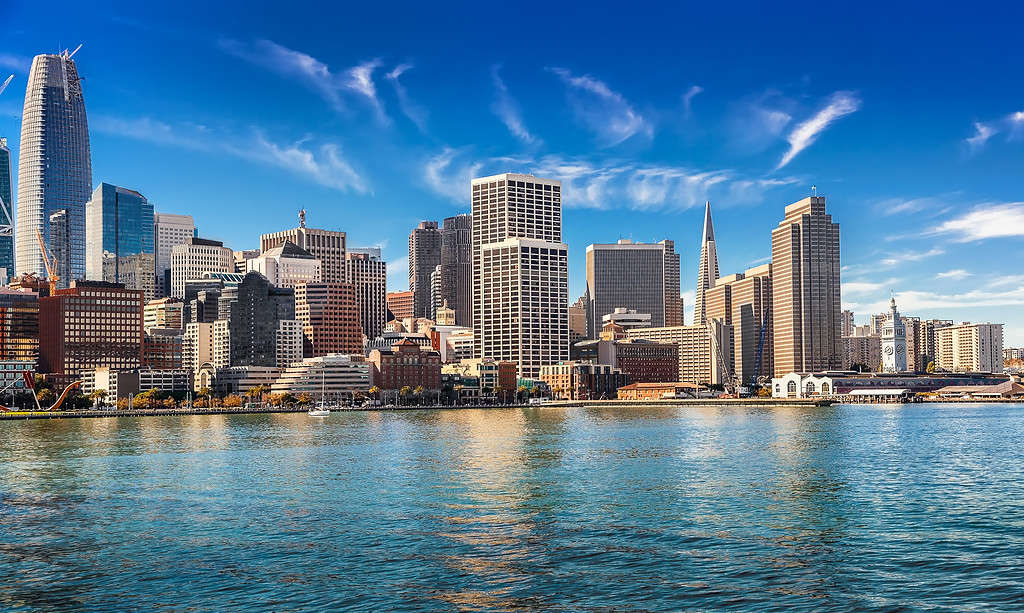
Due to conservation efforts, the pollution levels of Downtown San Francisco and the bay area have significantly fallen in the past 20 years.
©iStock.com/NAN104
The San Francisco Bay is home to myth, legend, and reality. Sitting between San Francisco, Oakland, and San Jose, the San Francisco Bay is where all water in the area flows through before entering the ocean. Water from the Sacramento, San Joaquin, and Sierra Nevada mountains flows into neighboring waterways that lead to one end; the San Francisco Bay. This massive bay was labeled a Ramsar Wetland of International Importance in 2013.
What is the San Francisco Bay?

Alcatraz island and prison is home to a few wild animals.
The San Francisco Bay is a massive body of water off the coast of California. It is the biggest estuary in California at 160 hectares. This body of water harbors 77% of California’s perennial estuarine wetlands. It provides a safe habitat for many types of flora and fauna and offers ecological protection through nutrition filtration, flood protection, water quality maintenance, and carbon sequestration.
The bay is only 12-15 feet deep in all locations except directly under the Golden Gate Bridge, where the bottom is about 370 feet deep. The area around Alcatraz is around 40 feet deep, which is standard for most bays’ depth.
The San Francisco Bay is home to over 1000 types of animals. It provides a sanctuary for wintering shore birds more than any other estuary along the US Pacific Coast south of Alaska. Some protected and endangered species call the bay home year-round. Birds aren’t the only one who seeks sanctuary from this historic bay. Over 130 species of resident and migratory marine fish call the bay home, even if just part-time. Sanctuary can be challenging, with a bay renowned for its tourism attraction and history.
Mythological Creatures in the San Francisco Bay

Could the Giant Oarfish be the serpent dragon the myths talked about?
©Dotted Yeti/Shutterstock.com
With every place, body of water, or attraction comes a myth. The San Fransisco Bay is no stranger to mythological creature stories or sightings from locals. Some have talked about a giant sea serpent haunting the bay waters.
In 1885, the NY Times published an article about this serpent. While on a ferry, several individuals saw a 10-foot-long neck come out of the water and open its gaping two-foot-wide mouth filled with sharp teeth. It took a look at the ferry passengers and dived back into the water, but not before raising a 60-foot tail.
In 1976, two men on Agate Beach saw a dragon-like being come out of the water, swim around playing for a bit, then dove back under. It was said to be 60 feet long and 15 feet wide.
In 1983, a construction crew working on the Golden Gate Bridge saw a long serpent-like creature swimming beneath them. One hundred birds and many sea lions followed the beast. The creature had three humps, was 100 feet long, and was five feet in diameter.
Maybe what they were seeing was a giant oarfish that decided to leave the bottom of the ocean, or perhaps it was a mythological sea serpent.
What Lives at the Bottom of the San Francisco Bay?

Angel Island is one of several islands along the San Francisco Bay where you can find protected wildlife.
©Bill Florence/Shutterstock.com
The City of Chester is at the bottom of the San Francisco Bay. It isn’t a city but a passenger steamship from 1888 that ran into the RMS Oceanic amongst the heavy fog upon its arrival from Asia. The wreckage, found in 2014, still sits 216 feet down in the mud at the bottom of the bay near the Golden Gate Bridge. Two hundred shipwrecks have taken place in the San Fransisco Bay, but most have been hauled out and auctioned off.
Rare Animals of the San Francisco Bay

The San Francisco Bay area is home to 97+ endangered and threatened species. Thus, in the last several decades, San Francisco Bay has seen a magnificent increase in plant and animal life due to the help of volunteer organizations, Like Save the Bay, focused on the rebuilding and conservation of the bay area’s fauna and flora. It is astonishing how these populations have resurfaced with a bit of help from these incredible volunteer conservationists. Unquestioningly because of such organizations, many animal populations have risen above the endangered level and continue to increase.
San Joaquin Kit Fox (Vulpes macrotis)

An endangered and sleepy San Joaquin Kit Fox (
Vulpes macrotis) lays in the warm sand on one of San Francisco Bay’s protected beaches.
©Jason Mintzer/Shutterstock.com
These adorable San Joaquin kit foxes are federally protected, and as a threatened species in the state of California, their protection continues. The kits are the smallest of the other species worldwide. Nonetheless, an adult weighs only 5.5 pounds, which is smaller than an average cat! These small foxes can live up to seven years in the wild.
California Least Tern (Sternula antillarum brownii)

This California Least Tern has found a safe place to nest on the sandy beaches of San Francisco Bay.
©Elliotte Rusty Harold/Shutterstock.com
The endangered California Least Tern is a shorebird with protection from the federal government. They settle along the San Francisco Bay’s beaches with their monogamous mates and nests. The only other area you can find them is on the northern beaches in Mexico. Each nest hatches 2-3 eggs per season.
Humpback Whale (Megaptera novaeangliae)

Humpback whale
and baby whale swimming together.
©iStock.com/inusuke
These massive beasts are the gentle giants of the ocean. Previously, they chose to swim past the bay area entirely, but in the last two years, they have been seen again in the San Francisco Bay. The increase is due to the growing numbers of endangered whales and the growing ocean temperature. They can weigh up to 66,000 pounds and be 52 feet long.
San Bruno Elfin Butterfly (Callophrys mossii bayensis)
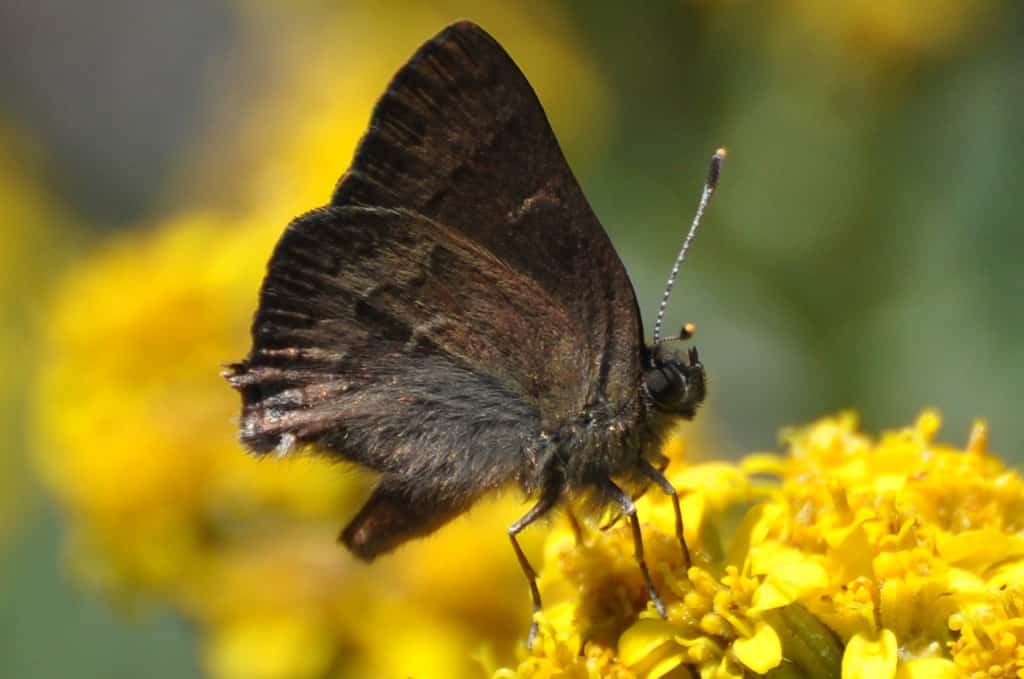
San Bruno Elfin
Butterfly
is an endangered San Francisco Bay area species.
The small, brown San Bruno Butterfly might be easy to overlook compared to some of the other brighter-colored butterflies of the San Fransisco Bay area, but they are equally important. These butterflies live in the Golden Gate Recreation Area and are endemic to the Bay Area.
Ohlone Tiger Beetle (Cicindela ohlone)

This Northern Dune Beetle (
cicindela hybrida) is similar in appearance to the endangered Ohlone
Tiger
Beetle (
Cicindela ohlone) of San Francisco Bay.
©F.Demonsant/Shutterstock.com
Since 2001, these green beetles have been federally protected. You can find them in the remaining coastal grasslands with poorly draining soil in Santa Cruz County. Additionally, these beetles are endangered mainly because of their diminishing habitat and the invasive grasses.
Delta Smelt (Hypomesus transpacificus)
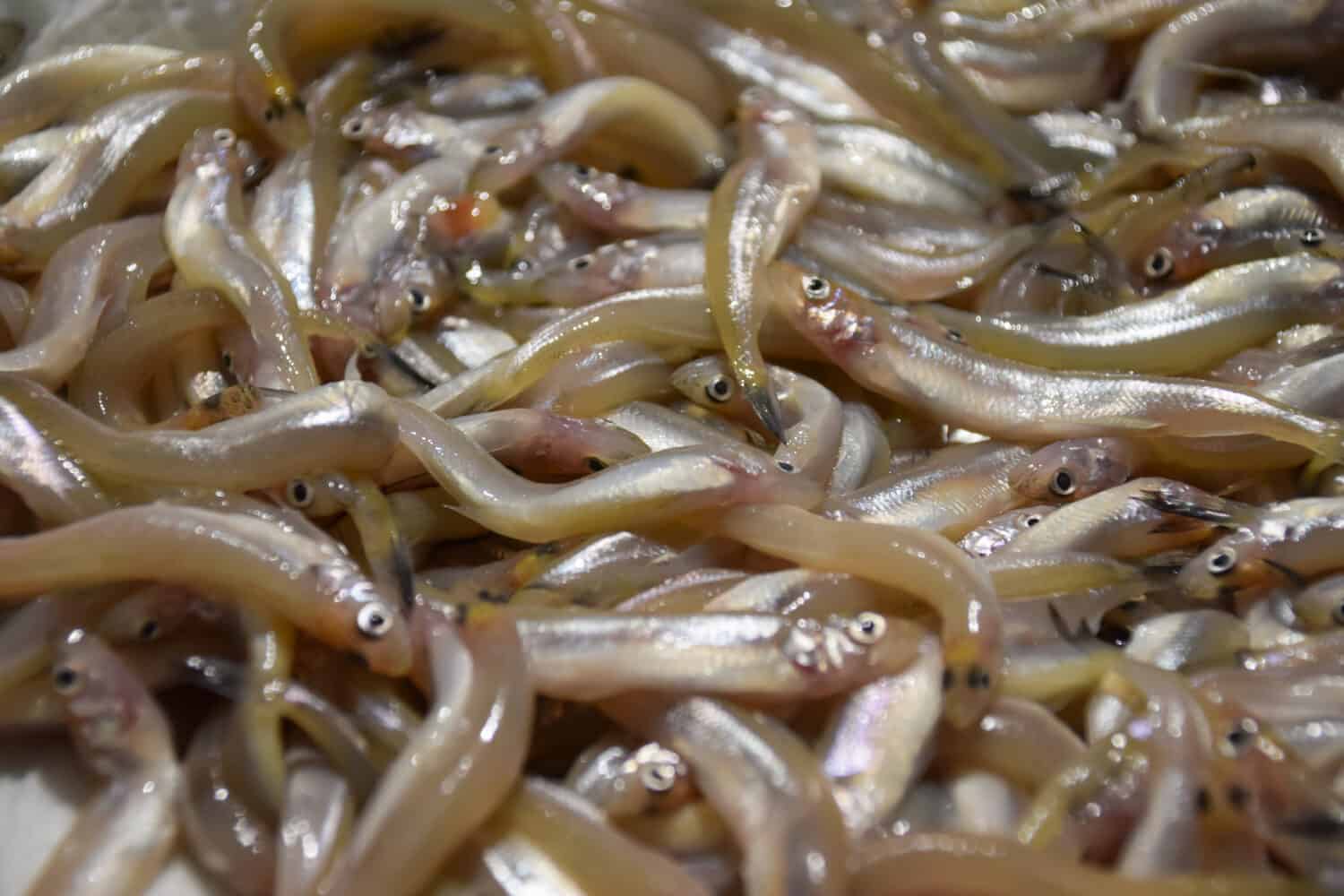
Delta Smelt is one of many protected fish in San Francisco Bay.
©KanphotoSS/Shutterstock.com
The Delta smelt lives in the San Joaquin Delta, and when its numbers decline, it indicates the overall health of the Delta. In 1993 the federal government issued them threatened, and in 2009, the California Endangered Species Act changed their status to endangered. Their continued decline is worrisome. Consequently, it is possible that so few of these small fish exist that their numbers will continue to decline.1500+ fish is the average population count from 1970, and numbers have recently been in the single digits.
Red-Legged Frog (Rana aurora)
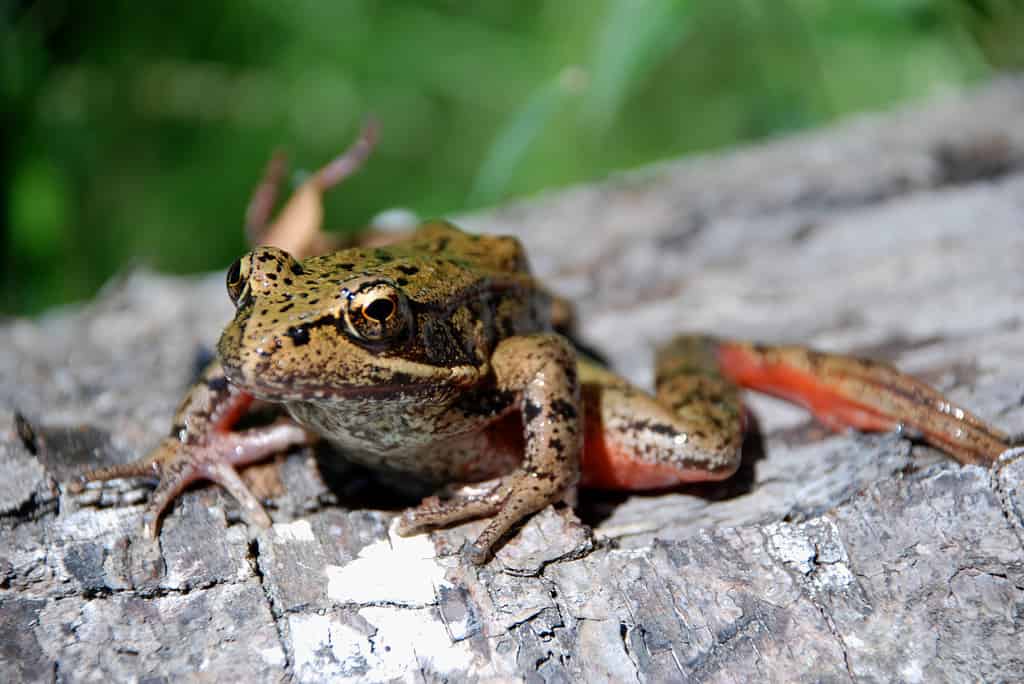
The Red-Legged Frog is the largest native frog in the western United States and is 2-5 inches long.
©Amy Devine/Shutterstock.com
The California Red-Legged frog is a brown/grey/olive frog with black spots, and the underside of its hind legs is red. Additionally, these frogs have been protected by the federal government since 1996. The Red-Legged frog is the state frog of California. Although sadly, nearly 70% of the frog population has disappeared due to the lack of environmental quality in California’s wetlands and streams.
What’s Wrong with the San Francisco Bay?
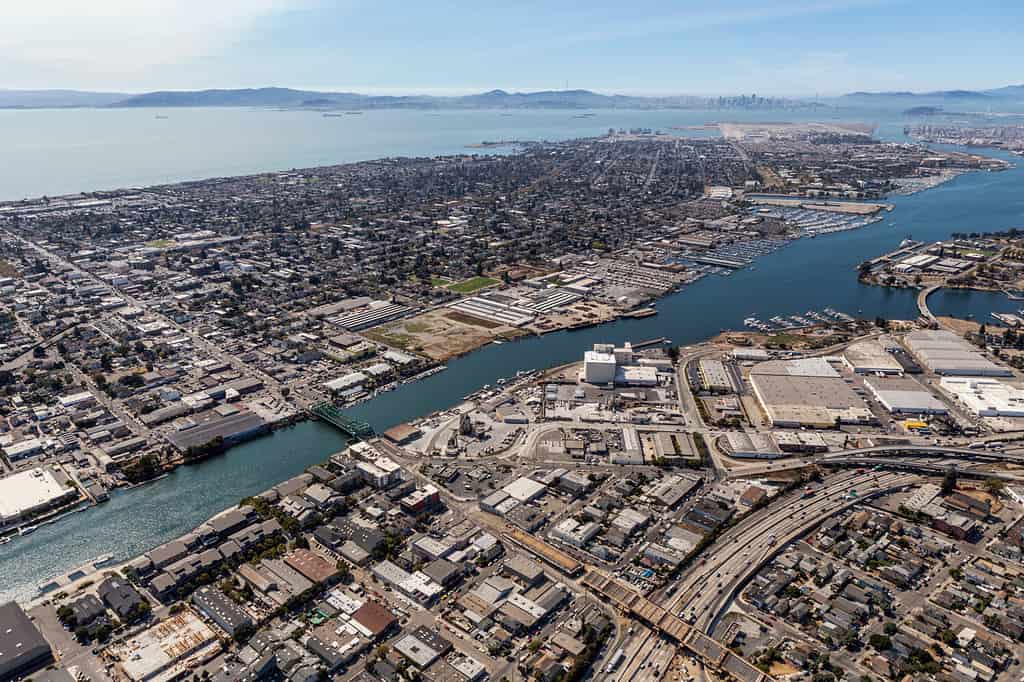
©trekandshoot/Shutterstock.com
The San Francisco Bay-Delta Watershed is facing many environmental obstacles. Consequently, there has been a steady decline in wetlands and proper flora to accommodate the endangered fauna. Population growth, habitat issues, water supply, and pollution are contributing factors to the Delta’s decline. The watershed is one of the world’s largest water supply sources.
The watershed is in serious trouble due to litter, sewage spills, pesticides, invasive species, and metals in the water. Furthermore, the Environmental Protection Agency and the State of California are working towards educating the public on safe water usage during this time of climate change.
Interesting Facts
- Many of the skyscrapers and buildings that make up San Francisco Bay’s skyline are built on top of ship wreckage.
- The San Francisco Bay is named for Saint Francis of Assisi.
- Salt has been a major commodity of the Bay area since 1853 and supplies the entire world.
- Over 90% of the Bay’s original wetlands have given way to building and development.
- Almost 8 million people call the San Francisco Bay area home.
- Three bays make up San Francisco Bay; San Francisco, San Pablo, and Suisun.
Thank you for reading! Have some feedback for us? Contact the AZ Animals editorial team.








